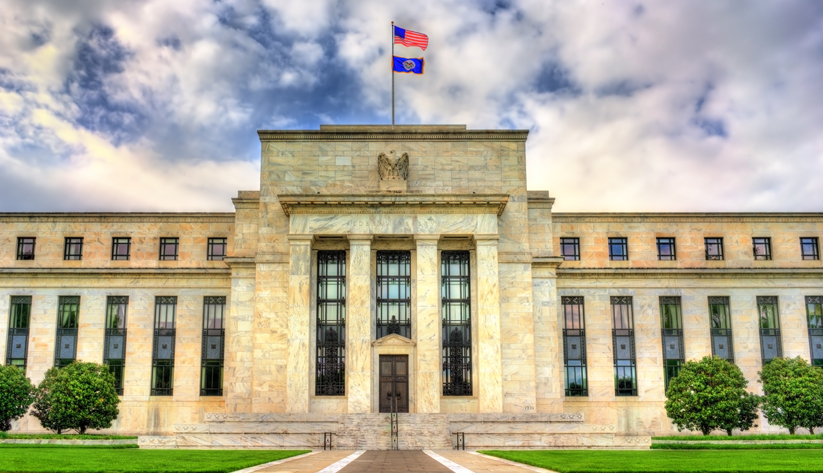
The names are not exactly lyrical.
The Primary Market Corporate Credit Facility. The Secondary Market Corporate Credit Facility. The Term Asset-Backed Securities Loan Facility.
No doubt, many Americans don't understand the intricacies of the Federal Reserve's many moves to keep credit flowing to households and businesses amid the coronavirus pandemic. But the overarching goal of these actions is straightforward—to prevent the economy from completely freezing up while public health experts get the virus under control.
The economy is being battered. Fifty-year lows in unemployment are moving to potentially very high, though temporary, levels "with alarming speed," Federal Reserve chair Jerome Powell said in an April 9 speech.
Yet if the Fed and other public agencies succeed in at least limiting the damage, then the nation's economy will be better positioned to rebound once the health crisis abates. Elected officials make the important decisions about delivering financial support directly to those most affected.
Making bold moves in a fluid situation is crucial
Federal Reserve officials learned during the financial crisis of 2008 that dire economic threats call for bold, decisive action, Atlanta Fed president Raphael Bostic said. So as the coronavirus pandemic triggered an economic emergency, the Fed moved aggressively.
First, the Federal Open Market Committee used its customary monetary policy tool and reduced the federal funds interest rate to a range of zero to 0.25 percent. Since then, the Fed has introduced more than a dozen emergency programs, each meant to support a particular part of the financial markets or economy—programs, for example, to help employers keep workers on payrolls and to keep municipal bond markets working so cities and counties can maintain critical services and infrastructure.
To be clear, the Federal Reserve is not legally set up to lend money directly to individuals and companies. Rather, it works through financial institutions and financial markets to ensure there is enough liquidity—readily accessible money—to keep the financial system humming.

Atlanta Fed president Raphael Bostic. Photo by David Fine
The central bank confronted increasing tension in financial markets by buying bonds and providing liquidity to make sure these markets continue to function. These markets, in fact, were starting to break down in March. Although markets for bonds, Treasury securities, and other securities may not appear to directly and immediately affect individuals, those mechanisms occupy a crucial role in channeling substantial amounts of money that large employers use to conduct business.
So if these capital markets grind to a halt, then the spillover to what economists call "the real economy”—as opposed to strictly the financial markets—can result in widespread layoffs, business closures, and financial hardship for families. Those troubles are happening already, but measures to keep markets functioning can at least contain the damage.
Recent market performance suggests these moves by the Fed have had their intended effect.
The Fed also took steps to keep direct loans flowing to businesses and households so they can weather a shock to incomes. For example, the Fed's Board of Governors has announced programs to help banks lend to small businesses that lack the financial cushion to weather many months without revenues. The Fed's Main Street Lending Program will help banks offer companies four-year loans with no interest or principal payments for the first year. Banks make the loans, but the Fed will then essentially buy 95 percent of the loans from the lending banks, up to $600 billion in loans. The U.S. Treasury Department is helping to fund this program with a $75 billion investment as part of the Coronavirus Aid, Relief, and Economic Security Act, commonly known as the CARES Act.
And along with other financial regulatory agencies, the Fed eased certain regulatory requirements to allow banks to focus all their attention on customers at this critical time. For instance, the Fed has indefinitely reduced to zero the amount of deposits financial institutions must hold at Reserve Banks such as the Atlanta Fed, essentially releasing more money to reach borrowers who need it.
Foremost, confronting a public health crisis
As Bostic and other officials have emphasized, the current crisis is primarily a public health one. As long as the novel coronavirus is spreading quickly, it will be difficult for the economy to stabilize and then recover. Therefore, a swift, responsible public health response is critical.
This economic crisis is different from most slowdowns in that it did not result from excessive risk-taking or a deterioration of economic fundamentals. Before the pandemic, labor markets were strong and consumers confident. Housing markets and the financial system were generally healthy.
In a sense, the roots of this economic downturn offer a degree of hope, Bostic noted. If we weather the crisis without lasting damage to those economic fundamentals, then the fundamentals can support a stronger recovery. To that end, the Federal Reserve's multipronged efforts to support the economy and financial system are designed to minimize long-term financial and economic damage.
The Atlanta Fed has made promoting economic mobility and resilience a strategic priority, so is particularly attuned to the pandemic's economic impact on our most vulnerable citizens. The grassroots economic intelligence we gather via our outreach efforts yields considerable insight into the economy and how it affects people's everyday lives, and that information will help shape Fed actions. After all, fostering the fastest recovery possible is perhaps the best way to help our low- and moderate-income neighbors.
"We are working hard to find solutions to relieve pain points wherever they are in the economy," Bostic said. "We are deepening our outreach to community leaders, businesses, and policymakers so we stay informed about the evolving impacts across our country, especially in our low- and moderate-income neighborhoods that are most vulnerable to economic shocks."




